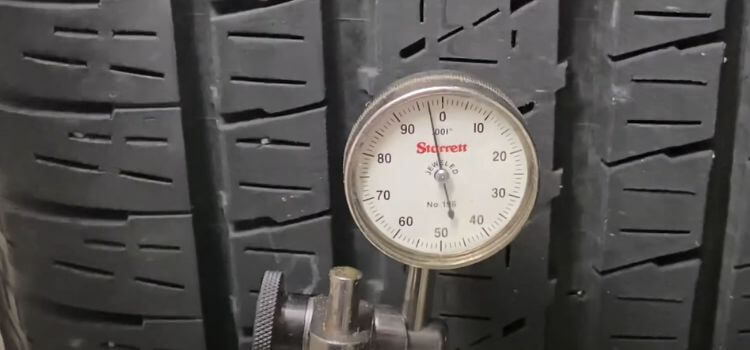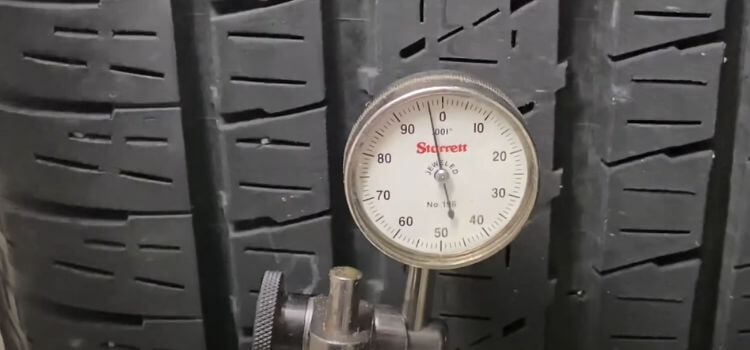As an Amazon Associate, I earn from qualifying purchases
Tire runout refers to the amount of deviation from a perfectly circular rotation of a tire. This can be caused by various factors such as manufacturing defects, improper installation, or wear and tear. It can lead to uneven tire wear, vibration, and decreased vehicle performance. It’s important to address tire runout to ensure safety and optimal vehicle performance.

Definition of tire runout
Tire runout refers to the condition in which the tire’s circumference is not perfectly round, causing the tire to wobble or vibrate when rotating. This can be caused by various factors, such as manufacturing defects, uneven tread wear, or damage to the tire. It is important to address tire runout issues as they can affect the vehicle’s handling and performance.
Causes of tire runout
Tire runout is the term used to describe the amount of deviation or wobble in a tire as it rotates. This deviation can be caused by a variety of factors, such as improper tire mounting, wheel misalignment, or manufacturing defects. Correcting tire runout is important for maintaining a smooth and safe ride, as excessive runout can lead to vibration, uneven tire wear, and handling issues. It’s significant to have a professional mechanic inspect your tires and wheels to identify and address any runout issues.
Effects of tire runout on vehicle performance

Tire runout refers to the amount of side-to-side movement in a tire as it rotates. This can have a significant impact on the performance of your vehicle, causing vibrations, uneven tire wear, and affecting the overall handling and stability of the car. It’s important to have your tires checked for runout regularly to ensure optimal vehicle performance and safety.
How to measure and diagnose tire runout
Tire runout is a term used to describe the amount of variation in the tire’s circumference as it rotates. This can occur due to imperfections in the tire or the wheel, and can lead to vibration and uneven tire wear. Measuring and diagnosing tire runout involves using specialized equipment to measure the variation in circumference and identify any issues with the tire or wheel that may be causing the problem. It’s important to address tire runout to ensure a smooth and safe driving experience.
Methods for correcting tire runout

Tire runout refers to the imbalance or wobbling of a tire, which can cause vibrations and affect the overall performance of the vehicle. It can be caused by various factors such as uneven tire wear, improper wheel alignment, or damaged suspension components. To correct tire runout, you can have the tires balanced and rotated, ensure proper wheel alignment, and inspect for any damaged or worn-out suspension parts. It’s important to address tire runout to ensure a smooth and safe driving experience.
Importance of addressing tire runout for vehicle safety and performance
Tire runout refers to the amount of lateral or radial movement in a tire as it rotates. Addressing tire runout is important for vehicle safety and performance, as it can lead to decreased traction, steering response, and overall driving comfort. Having properly balanced tires and addressing any runout issues can help ensure a safer and smoother driving experience. It is important to have your tires inspected and serviced by a professional to maintain optimal vehicle performance and safety.
Conclusion
tire runout refers to the measurement of the deviation of a tire’s tread or sidewall from a perfect circle when it is mounted on a wheel and inflated. It’s important to regularly check for tire runout and address any issues to ensure the safety and efficiency of your vehicle.
As an Amazon Associate, I earn from qualifying purchases
Leave a Reply